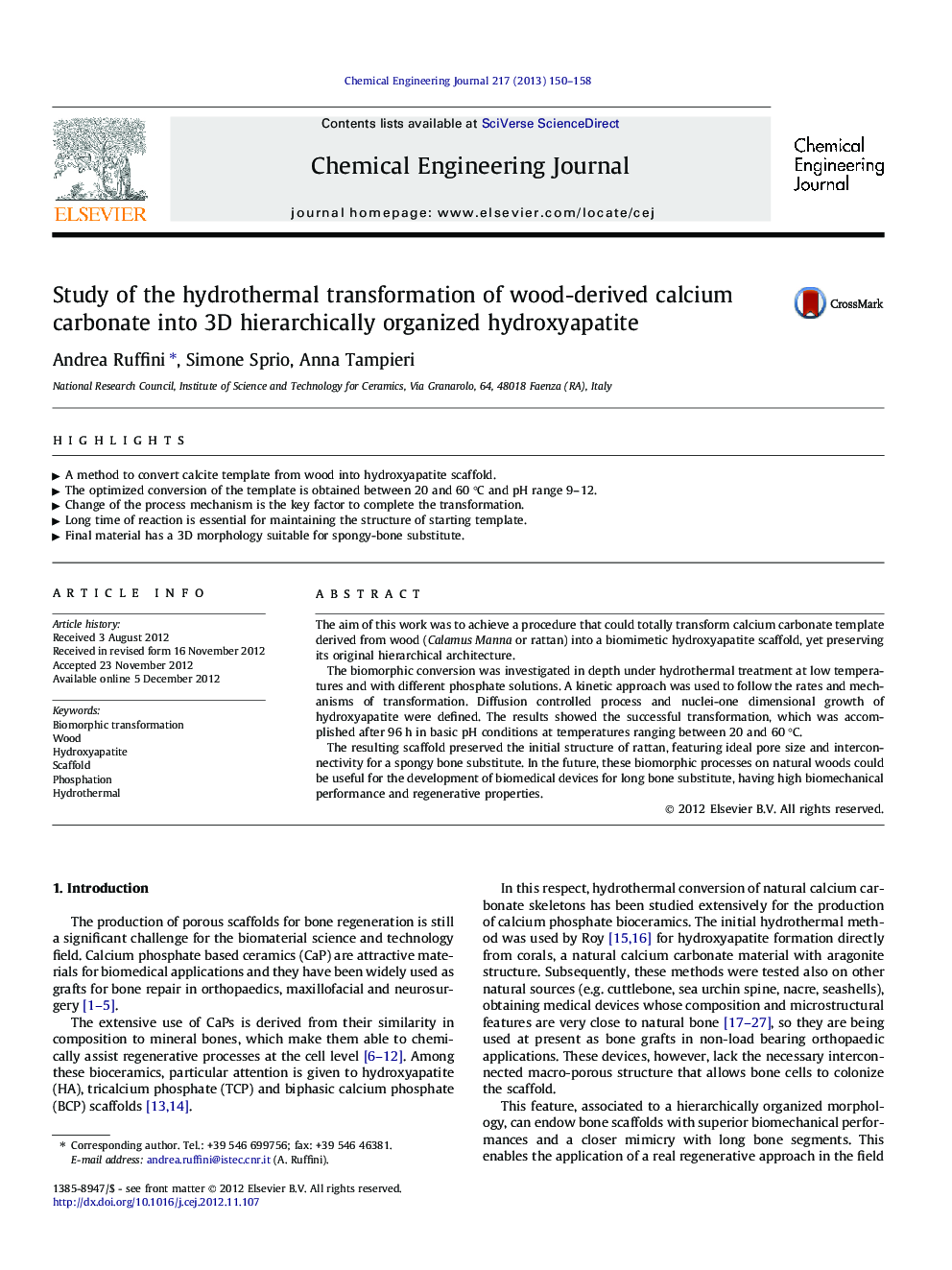| Article ID | Journal | Published Year | Pages | File Type |
|---|---|---|---|---|
| 148856 | Chemical Engineering Journal | 2013 | 9 Pages |
The aim of this work was to achieve a procedure that could totally transform calcium carbonate template derived from wood (Calamus Manna or rattan) into a biomimetic hydroxyapatite scaffold, yet preserving its original hierarchical architecture.The biomorphic conversion was investigated in depth under hydrothermal treatment at low temperatures and with different phosphate solutions. A kinetic approach was used to follow the rates and mechanisms of transformation. Diffusion controlled process and nuclei-one dimensional growth of hydroxyapatite were defined. The results showed the successful transformation, which was accomplished after 96 h in basic pH conditions at temperatures ranging between 20 and 60 °C.The resulting scaffold preserved the initial structure of rattan, featuring ideal pore size and interconnectivity for a spongy bone substitute. In the future, these biomorphic processes on natural woods could be useful for the development of biomedical devices for long bone substitute, having high biomechanical performance and regenerative properties.
► A method to convert calcite template from wood into hydroxyapatite scaffold. ► The optimized conversion of the template is obtained between 20 and 60 °C and pH range 9–12. ► Change of the process mechanism is the key factor to complete the transformation. ► Long time of reaction is essential for maintaining the structure of starting template. ► Final material has a 3D morphology suitable for spongy-bone substitute.
